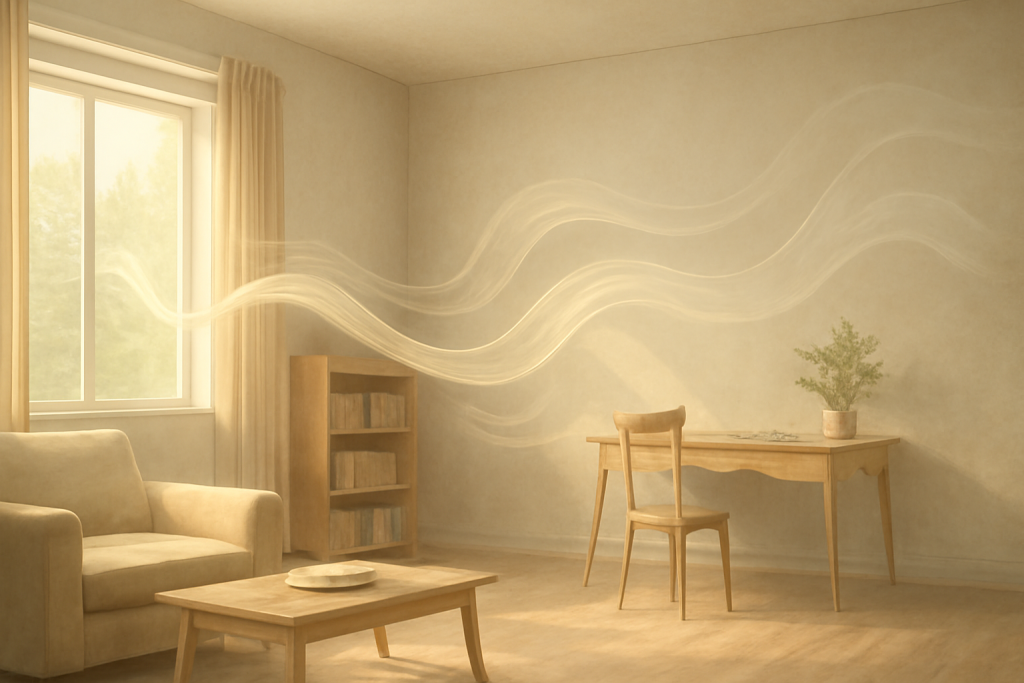The environment in which we work, study, and live plays a much more significant role in our mental clarity and cognitive abilities than we might realize. The concept of physical space affecting mental fluidity has become an increasingly relevant topic in both personal productivity and workplace design. In today’s world, where mental agility, creativity, and focus are paramount, the spaces we inhabit can either enhance or hinder our cognitive processes.
Research has shown that our physical surroundings directly impact mental flexibility, problem-solving capabilities, and overall cognitive performance. From the layout of our offices to the organization of our desks, the physical environment influences how we think, feel, and work. In this article, we’ll explore the emerging trend of how physical space affects mental fluidity and offer insights on how to optimize your environment for improved cognitive performance.

The Connection Between Space and Cognitive Functioning
1. The Impact of Environment on Mental Clarity
The environment around us does more than just serve as a backdrop to our daily activities. It actively shapes the way our minds work. A cluttered, disorganized space can overwhelm the brain, leading to cognitive fatigue and reduced mental fluidity. On the other hand, a well-organized, aesthetically pleasing environment can promote mental clarity and enhance cognitive function.
- Clutter and Cognitive Load: Research suggests that a cluttered environment increases cognitive load, which is the mental effort required to process information. When surrounded by clutter, the brain is forced to process unnecessary information, leaving fewer resources available for critical thinking and decision-making. This can lead to mental fatigue and decreased productivity.
- Organized Spaces for Better Focus: In contrast, spaces that are neatly organized and free from distractions allow for better focus and efficiency. Studies have shown that a tidy workspace can lead to increased concentration, enabling individuals to process information more effectively and make decisions with greater clarity.
Key Insight: The state of our environment plays a crucial role in how we think. An organized and clutter-free space supports mental clarity, improving cognitive performance and mental fluidity.
2. How Lighting and Color Influence Mental Fluidity
Lighting and color are key elements in shaping the atmosphere of a space. Research indicates that both lighting and color choices can influence mood, energy levels, and cognitive function, all of which contribute to mental fluidity.
- Lighting for Focus and Alertness: Proper lighting is essential for maintaining focus and mental energy. Natural light is particularly beneficial, as it boosts mood and helps regulate circadian rhythms, improving alertness and reducing fatigue. Artificial lighting, particularly in spaces that lack natural light, can cause eye strain and contribute to feelings of sluggishness or irritability.
- Color Psychology and Creativity: The colors in a room can also affect how we think and feel. Warm colors like red and yellow are known to stimulate creativity and energy, while cooler colors like blue and green promote calmness and focus. Incorporating colors that align with your task—such as blue for focus and red for creativity—can enhance mental fluidity and cognitive performance.
Key Insight: Lighting and color have a profound impact on cognitive function. Optimizing these elements in your environment can boost focus, creativity, and mental agility.
The Role of Space Design in Stimulating Creativity
3. Open Spaces vs. Closed Spaces: Which One Boosts Creativity?
The design of a physical space—whether open or closed—can significantly influence how individuals think and work. Open-plan offices have become increasingly popular, and for good reason: they promote collaboration, provide a sense of openness, and help stimulate the flow of ideas. However, there are also drawbacks to open spaces, including potential distractions and a lack of privacy.
- Open Spaces for Collaboration: Open spaces allow for quick collaboration, which can spark creativity and innovation. When teams are able to communicate easily and share ideas without barriers, they often generate new solutions more rapidly. This is particularly beneficial in industries where brainstorming and group problem-solving are essential.
- Closed Spaces for Deep Focus: While open spaces promote collaboration, closed spaces or quiet areas are necessary for tasks that require deep focus and independent thinking. When working on complex problems that require sustained attention, the ability to isolate oneself from distractions is vital for mental fluidity. Having a balance between collaborative open spaces and private, quiet areas helps ensure that both creativity and concentration are supported.
Key Insight: The design of a space should allow for both collaboration and focused work. A mix of open and closed spaces enhances mental fluidity, offering the flexibility to shift between creativity and deep concentration.
4. The Importance of Personalized Spaces
Another key factor in mental fluidity is the ability to personalize one’s space. People who have the autonomy to tailor their environments to their preferences tend to feel more comfortable and engaged in their work or study. Personalized spaces foster a sense of ownership, which can positively impact motivation, creativity, and cognitive engagement.
- Personalization and Motivation: Studies have shown that personalizing workspaces with meaningful items, such as photos, plants, or artwork, can increase feelings of comfort and control. These elements can reduce stress and enhance focus, providing individuals with the mental space to think more freely and creatively.
- Comfort and Cognitive Performance: Comfort plays a significant role in cognitive performance. Adjustable desks, ergonomic chairs, and even comfortable lighting can create an environment that promotes mental fluidity. When individuals are physically comfortable, they can better direct their attention toward intellectual tasks, leading to higher productivity and creativity.
Key Insight: Allowing for personalization and comfort in physical spaces enhances cognitive performance. Personalized spaces increase motivation and mental clarity, fostering creativity and mental fluidity.
The Growing Trend of Biophilic Design
5. Nature’s Influence on Mental Fluidity
One of the emerging trends in modern architecture and interior design is biophilic design, which integrates natural elements into the built environment. Studies have shown that incorporating nature into our physical spaces can significantly improve mental fluidity, creativity, and overall cognitive function.
- Nature and Cognitive Benefits: Exposure to nature—whether through indoor plants, natural light, or natural materials—has been linked to reduced stress, improved concentration, and enhanced problem-solving skills. Natural elements help restore cognitive resources, making it easier to focus and think critically.
- Biophilic Design in Offices and Homes: Many companies are now incorporating biophilic design into their office spaces, adding plants, natural wood elements, and large windows to let in natural light. Similarly, homes that incorporate natural elements can provide a calming, rejuvenating environment that promotes creativity and mental clarity.
Key Insight: Biophilic design enhances mental fluidity by integrating nature into spaces. Natural elements help reduce stress and improve cognitive function, boosting creativity and focus.
How to Optimize Your Physical Space for Mental Fluidity
6. Tips for Creating a Space that Supports Mental Agility
Now that we understand the key factors that contribute to mental fluidity, here are some practical tips to optimize your physical environment for better cognitive performance:
- Declutter Your Space: Start by clearing your workspace of unnecessary items. Use organizers, storage, and minimalist decor to create a clean and focused environment.
- Maximize Natural Light: Try to position your desk near windows or use natural light sources whenever possible. If natural light isn’t an option, invest in high-quality artificial lighting that mimics daylight.
- Incorporate Comfort: Ensure that your workspace is physically comfortable. Invest in ergonomic furniture, adjustable desks, and items that promote good posture and comfort.
- Create Zones for Focus and Collaboration: Designate specific areas for deep work (quiet, closed spaces) and areas for collaboration (open, inviting spaces). Balance is key.
- Add Personal Touches: Include items that inspire and motivate you, such as plants, photos, or artwork. Personalization enhances engagement and well-being.
Key Insight: By paying attention to the layout, lighting, comfort, and personalization of your space, you can create an environment that maximizes mental fluidity and promotes better cognitive performance.
Conclusion
The physical space we occupy has a direct influence on our cognitive processes. From lighting and color to layout and personalization, the design of a space can either enhance or hinder mental fluidity. As we continue to understand the importance of environment on creativity, focus, and intellectual clarity, optimizing our physical spaces becomes crucial for success in both personal and professional life.
By embracing thoughtful design elements, such as incorporating nature, reducing clutter, and allowing for personalization, we can foster an environment that supports mental agility and creativity. Ultimately, creating spaces that nurture mental fluidity leads to more productive, innovative, and confident thinking.
Reference
- Effects of Color and Lighting Temperature on Mood and Cognitive Performance, https://www.sciencedirect.com
- Correlated Color Temperature and Attention, https://pmc.ncbi.nlm.nih.gov
- Biophilic Design Patterns and Cognitive Restoration, https://www.mdpi.com









